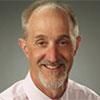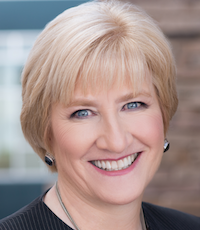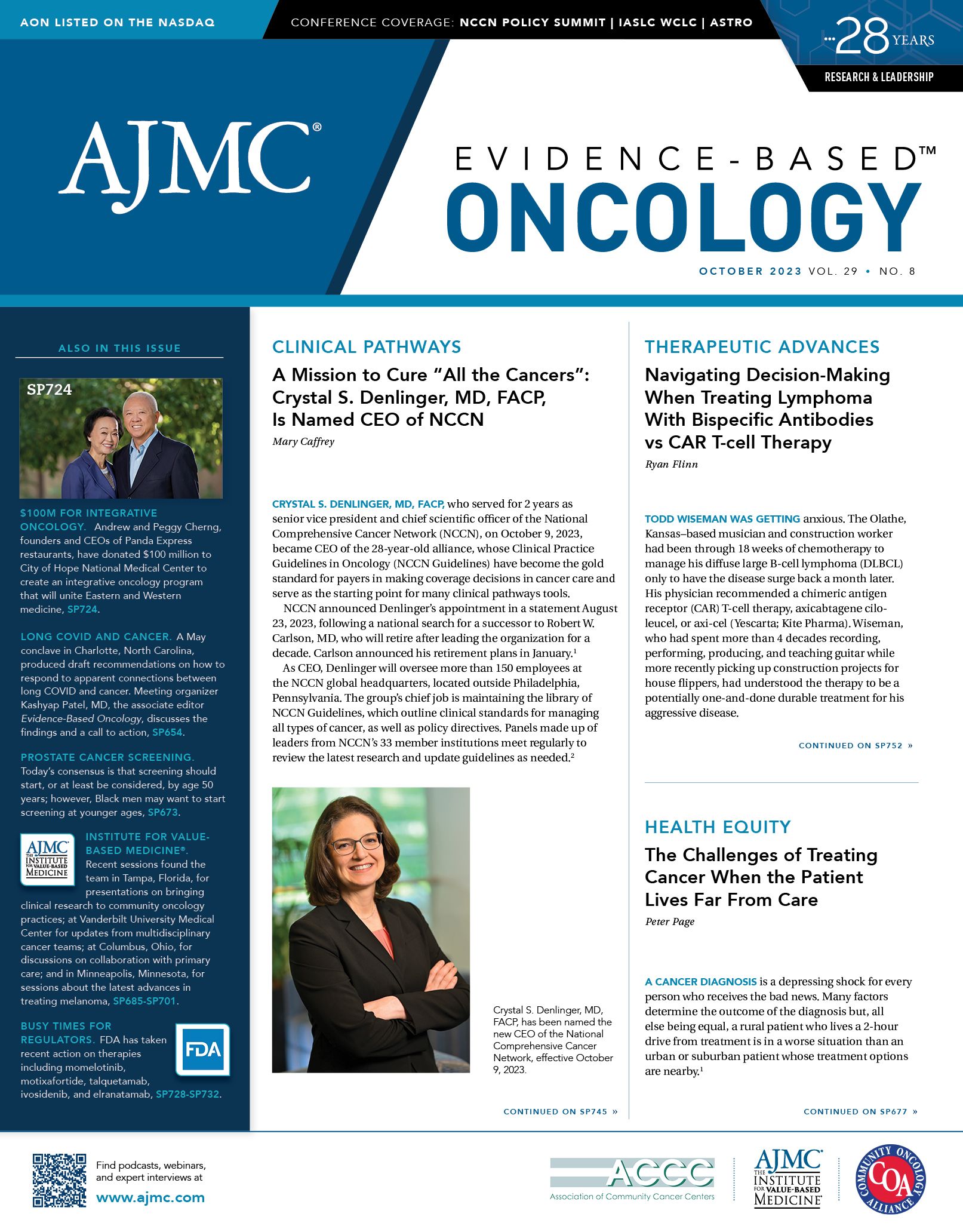- Center on Health Equity & Access
- Clinical
- Health Care Cost
- Health Care Delivery
- Insurance
- Policy
- Technology
- Value-Based Care
The Challenges of Treating Cancer When the Patient Lives Far From Care
A cancer diagnosis is a depressing shock for every person who receives the bad news. Many factors determine the outcome of the diagnosis but, all else being equal, a rural patient who lives a 2-hour drive from treatment is in a worse situation than an urban or suburban patient whose treatment options are nearby.1
There is vast literature on the challenges of oncology in rural America,1-4 which is one part of the immense challenges of delivering health care of all kinds in sparsely populated regions. One problem is simply defining rural. It is a subjective term; what people call rural in a state like New Jersey would likely be called suburban in sparsely populated states. The US Department of Agriculture categorizes 74% of the United States as rural (or approximately 2.85 million sq mi) but just 15% of the US population (or approximately 50 million individuals) live there.5 That averages out to fewer than 6 individuals per sq mi. Other definitions of rural push the estimated rural population closer to 20% of the US total. However, whatever definition is applied, the cancer care challenges in rural America are formidable.6
Although rural has many definitions, everyone understands remote. Montana is the fourth-largest state geographically but 43rd largest in population, with approximately 1.12 million residents.7 There are 56 counties in the state, but the approximately 30 oncologists practicing there are concentrated in just 6 of those counties, according to Jack Hensold, MD, an oncologist in Bozeman who is a leading researcher on how traveling long distances complicates cancer treatment for patients.
“What you have is large sections of the state where there’s not an oncologist in a county,” said Hensold, who was the first author on a 2022 paper that examined how distance to care affects cancer treatment in Montana.5 Many of his patients drive up to 125 mi to receive care at his office, then drive back home. “We routinely had people sandwiching a 250-mile round trip around chemotherapy,” he said.

Hensold, who chairs the American Society of Clinical Oncology (ASCO) Rural Cancer Care Task Force,8 says there is a statistical correlation between the distance a patient is from a Commission on Cancer (COC)-certified treatment center and the likelihood of the patient receiving treatment. His research indicates that when a patient lives farther than 60 miles from a COC treatment facility, the probability of that patient leaving the state for care, or skipping care entirely, dramatically increases.5
In counties with a certified treatment facility, approximately 18% of patients with cancer receive no treatment, which Hensold noted is the same as the national average and is appropriate for cancers when “watchful waiting” is acceptable. By contrast, in the 50 Montana counties without a COC facility, Hensold detected “a highly statistically significant increase” in the rate of nontreatment, as high as 30% at the extreme and on average 20.5%.5 “That was a 16% increase in not receiving care, following a cancer diagnosis,” he said.
“The best explanation I can come up with is proximity to a site with good cancer care delivery educates both the primary care providers in an area as well as their patients regarding options for care,” Hensold said of the data. “If you’re not in proximity to those sites, you could either make a decision that either there’s no good treatment for [your] cancer, [so you’re] not going to pursue treatment,” or, if there is no good treatment in the state to the patient’s knowledge, the patient may need to leave the state.
The solution, he believes, is to provide treatment nearer to patients and their primary care doctors. Hensold is the head of a pilot project announced by ASCO in October 20229 to develop a hub-and-spoke treatment model, linking a hub (Bozeman Health Cancer Center) with the spoke (Barrett Hospital & HealthCare). Barrett Hospital is a community-based nonprofit Critical Access Hospital and medical clinic provider in Dillon, a city of approximately 4000 individuals 120 mi from Bozeman.
Living far from an oncologist is not unique to patients in the far west. Only 3% of medical oncologists practice in rural communities, and at least 70% of US counties do not have a single practicing oncologist.10 Disturbingly, there are strong indications that access to oncology care is continuing to shrink. A 2020 report by the Community Oncology Alliance found that 1748 community oncology clinics merged, closed, or reported struggling financially in the 12 years from 2008 to 2020.11
Simply getting to where care is delivered and back home takes a lot of time for patients with cancer, wherever they live. One study on the time cost of cancer care estimated that the typical patient undergoing cancer treatment spends 15.8 hours per month on care, of which fully a third—5.3 hours per month—is devoted simply to getting to where care is delivered and back home. The authors of the study conceded their estimate is “likely underestimated.”12
Another study found that older patients with breast cancer who live in rural areas traveled 40.8 mi to care on average compared with 15.4 miles for patients who reside in urban areas.3 The average patient with cancer in a rural area is nearly 22 mi from the nearest treatment facility compared with less than 5 mi for patients with cancer in urban areas.
“Follow the Money”
Barbara McAneny, MD, former president of the American Medical Association (AMA), is CEO of New Mexico Oncology Hematology Consultants (NMCC), which operates New Mexico Cancer Care. NMCC operates a main, full-service cancer care facility in Albuquerque, which has by far the largest city in the state with a population of 560,000, and a second clinic in Gallup, which has a population of not quite 21,000, in the heart of the Navajo Nation. Doctors from the Albuquerque facility make the 4-hour round trip drive to Gallup and back home daily.
McAneny

McAneny traveled the country during her tenure as AMA president, visiting clinics and hospitals in impoverished inner cities and left-behind rural areas. She has simple advice to anyone trying to understand the challenges of delivering oncology, and health care generally, to rural America: “Follow the money.”
“There aren’t [enough] primary care doctors in the US because primary care, under the Physician Fee Schedule,13 is paid so badly that if the primary care doctor sees 4 patients an hour, 7.5 hours a day, 50 weeks a year, and pays the usual 50% overhead, they’re going to come home with maybe $150,000. And they can go to a hospital system and make $300,000. What would you do?”
Reimbursements are a big obstacle to persuading doctors to work in rural areas, but it is not the only one, McAneny explained. “Burnout is a huge problem for rural physicians,” she said. “When they go to the grocery store, their patients are in the grocery store. [They’ll say], ‘Doc, I’ve been meaning to get to your office.’ Then you’re answering questions at the grocery store. Everyone needs time off from their day job.”
Other considerations that aren’t solved simply with higher reimbursements are the isolation of living in remote communities, poor local schools for the children of physicians, and few job opportunities for their spouses. “Doctors are educated professionals who value education for their children, and nobody can get by on one income anymore, so those are major barriers to persuading a doctor to move to a rural community,” McAneny said. When asked whether rural oncology and health care generally is getting better or worse, she didn’t hesitate.
“It’s gotten worse,” she said. “It’s gotten worse because it used to be in rural communities, [where] there would be a bunch of independent practice doctors clustered around the local hospital. That was where they lived. They owned their practices; that was their life and their career. The local hospitals benefited and it worked pretty well. But over time, the hospital Outpatient Prospective Payment System fee schedule has increased [more than] 60%.14 Over the past 20 years, the Physician Fee Schedule has had an increase of 6%.13 They’ve made independent practices nonviable, so doctors leave to join a hospital system in a city.”
The Demographics of Cancer in Rural America
Just as there are more challenges than low reimbursements confronting oncologists in rural areas, the challenge of living a long distance from care is not the only challenge for rural patients.
The population of rural America is generally older,15 more inclined toward unhealthy behaviors such as smoking and drinking, and less likely to pursue or have access to preventive care than those living in urban and suburban areas.16 According to a CDC study, the more rural the area a person lives in, the more likely they are to smoke, drink in excess of recommended guidelines, be overweight or obese, and exercise less than the recommended levels for weekly aerobic activity.15
Additionally, rural residents are more likely to live in poverty and less likely to have access to health insurance.16 Ten states have not expanded Medicaid to households earning 133% of the federal poverty level: Alabama, Florida, Georgia, Kansas, Mississippi, South Carolina, Tennessee, Texas, Wisconsin, and Wyoming. According to the Center on Budget and Policy Priorities, that leaves more than 2.1 million individuals in the coverage gap, meaning they do not qualify for Medicaid but would if their states used the option to expand coverage under the Affordable Care Act.17
Investigators at the CDC found a lower incidence of cancer of all types in rural counties but higher death rates compared with nonmetropolitan urban and metropolitan counties.18 In addition, the study showed that the differences in death rates between rural and urban areas are increasing over time. Lung and colorectal cancers occur more often in rural populations. The higher rate of lung cancer is attributed to higher rates of tobacco use;19 this gap in death rates is occurring amid a period of rapid innovation in targeted treatment of lung cancer. The elevated incidence of colorectal cancer rates are mostly attributed to obesity and lower adherence to screening.20,21
The rates of breast cancer and prostate cancer tend to be higher in urban areas because a greater percentage of the population is screened regularly, which means a patient in an urban area is typically diagnosed earlier than a patient in a rural area.22 However, death rates for lung, colorectal, pancreatic, and breast cancers are higher in rural areas, with particularly large disparities for lung cancer and relatively small disparities for breast and pancreatic cancers. Evidence suggests that progress in reducing cancer death rates for all cancers combined and for most common cancers has been slower in rural than in urban areas, further widening the disparity in mortality.23
Oncology care often starts with a referral from an alert primary care doctor, but rural access to primary health care is only somewhat better than the access to oncology care. A recent overview of the medical care workforce in rural areas found there are only 10.9 physicians per 10,000 rural residents compared with 31.7 per 10,000 urban residents.24 The shortage of primary care doctors in rural areas often means patients with cancer are diagnosed at a later stage of the disease.
A Problem Oncology Cannot Solve Alone
All over the United States, oncologists and oncology practices are working to bring care to patients who lack the stamina, and often the gas money, to travel to where care is available.
Telehealth, which had been hobbled by regulatory constraints until the COVID-19 pandemic, has great potential to at least partially solve the problem of patients with cancer living very far from care.25 Oncologists at Sevier Valley Hospital in Richfield, Utah, published a paper in 2020 that details the benefits and potential of telehealth for both patients with cancer and the hospital.26 Patients were treated via real-time video-based telehealth under the care of an oncologist at a tertiary medical center. They calculated that from 2015 to 2018, patients saved 4 hours, 40 minutes, and 332 mi round trip per encounter on average, as well $333,074 cumulatively on related costs. Sevier Hospital “retained $3,605,500 in revenue’’ over the 4-year period.
Telehealth has promise, agreed Hensold, but he warned it “is not a panacea.”
“Telehealth can certainly be part of the solution, but a comprehensive approach to address the existing barriers is needed,” he wrote in an email.
McAneny, frustrated that patients abandon treatment because of the costs and difficulties of transporting themselves for care, founded the New Mexico Cancer Center Foundation to assist patients with up to $2000 in nonmedical costs. It’s helped a lot of patients, but she is quick to admit that it has not solved the biggest problem. “We pay cell phone bills, we fix their roof, we put hot water heaters in their houses—we do whatever patients tell us they need that makes it possible for them to continue fighting their medical problem,” she said. “We can take care of the patient in front of us, but we can’t take care of everybody. We can’t solve poverty.”
References
1. Ambroggi M, Biasini C, Del Giovane C, Fornari F, Cavanna L. Distance as a barrier to cancer diagnosis and treatment: review of the literature. Oncologist. 2015;20(12):1378-1385. doi:10.1634/theoncologist.2015-0110
2. Raman V, Adam MA, Turner MC, Moore HG, Mantyh CR, Migaly J. Disparity of colon cancer outcomes in rural America: making the case to travel the extra mile. J Gastrointest Surg. 2019;23(11):2285-2293. doi:10.1007/s11605-019-04270-5
3. Longacre CF, Neprash HT, Shippee ND, Tuttle TM, Virnig BA. Evaluating travel distance to radiation facilities among rural and urban breast cancer patients in the Medicare population. J Rural Health. 2020;36(3):334-346. doi:10.1111/jrh.12413
4. Kenamond MC, Mourad WF, Randall ME, Kaushal A. No oncology patient left behind: challenges and solutions in rural radiation oncology. Lancet Reg Health Am. 2022;13:100289. doi:10.1016/j.lana.2022.100289
5. Hensold JO, Zimmerman H, Merrill JK, Nagarajan S, Ng D, Grubbs SS. The impact of geography on receipt of cancer treatment in Montana. J Clin Oncol 2022;40(suppl 28):140. doi:10.1200/JCO.2022.40.28_suppl.140
6. Hart LG, Larson EH, Lishner DM. Rural definitions for health policy and research. Am J Public Health. 2005;95(7):1149-1155. doi:10.2105/AJPH.2004.042432
7. QuickFacts: Montana. United States Census Bureau. Accessed September 9, 2023. https://www.census.gov/quickfacts/fact/table/MT/PST045222
8. ASCO announces new task force to address rural cancer care gap. News release. American Society of Clinical Oncology. April 10, 2019. Accessed September 9, 2023. https://bit.ly/46kTZUb
9. Pilot program launching to increase access to cancer care for rural Montanans. News release. American Society of Clinical Oncology. October 11, 2022. Accessed September 9, 2023. https://bit.ly/48tMT1G
10. Rural-urban disparities in cancer. National Cancer Institute. Accessed September 9, 2023. https://bit.ly/46584VW
11. 2020 Community Oncology Alliance Practice Impact Report. Community Oncology Alliance. April 24, 2020. Accessed September 9, 2023. https://bit.ly/3LvLIVC
12. Prasad V, Olivier T, Chen EY, Haslam A. Estimation of time cost of anti-cancer drugs approved based on comparisons to best supportive care: a cross sectional analysis. J Cancer Policy. 2022;34:100363. doi:10.1016/j.jcpo.2022.100363
13. Physician Fee Schedule. CMS. Accessed September 9, 2023. https://go.cms.gov/48q1j2J
14. Outpatient Prospective Payment System (OPPS). Medicare Interactive. Accessed September 9, 2023. https://bit.ly/3EQMdpn
15. Matthews KA, Croft JB, Liu Y, et al. Health-related behaviors by urban-rural county classification — United States, 2013. MMWR Surveill Summ. 2017;66(5):1-8. doi:10.15585/mmwr.ss6605a1
16. Newkirk V, Damico A. The Affordable Care Act and insurance coverage in rural areas. Kaiser Family Foundation. May 29, 2014. Accessed September 9, 2023. https://www.kff.org/uninsured/issue-brief/the-affordable-care-act-and-insurance-coverage-in-rural-areas/
17. The Medicaid coverage gap: state fact sheets. Center on Budget and Policy Priorities. Updated March 3, 2023. Accessed September 9, 2023. https://bit.ly/466zv1K
18. Henley SJ, Anderson RN, Thomas CC, Massetti GM, Peaker B, Richardson LC. Invasive cancer incidence, 2004-2013, and deaths, 2006-2015, in nonmetropolitan and metropolitan counties — United States. MMWR Surveill Summ. 2017;66(14):1-13. doi:10.15585/mmwr.ss6614a1
19. Geographic regions and commercial tobacco: health disparities and ways to advance health equity. CDC. Updated June 27, 2022. Accessed September 9, 2023. https://www.cdc.gov/tobacco/health-equity/regional/index.htm
20. Trivedi T, Liu J, Probst J, Merchant A, Jhones S, Martin AB. Obesity and obesity-related behaviors among rural and urban adults in the USA. Rural Remote Health. 2015;15(4):3267.
21. Wang H, Roy S, Kim J, Farazi PA, Siahpush M, Su D. Barriers of colorectal cancer screening in rural USA: a systematic review. Rural Remote Health. 2019;19(3):5181. doi:10.22605/RRH5181
22. Fogleman AJ, Mueller GS, Jenkins WD. Does where you live play an important role in cancer incidence in the U.S.? Am J Cancer Res. 2015;5(7):2314-2319.
23. Henley SJ, Jemal A. Rural cancer control: bridging the chasm in geographic health inequity. Cancer Epidemiol Biomarkers Prev. 2018;27(11):1248-1251. doi:10.1158/1055-9965.EPI-18-0807
24. Rural healthcare workforce. Rural Health Information Hub. Updated February 24, 2023. Accessed September 9, 2023. https://bit.ly/3PwYXpV
25. Glaser J, Zebley K. It’s time to cement telehealth’s place in U.S. health care. Harvard Business Review. January 20, 2023. Accessed September 9, 2023. https://hbr.org/2023/01/its-time-to-cement-telehealths-place-in-u-s-health-care
26. Thota R, Gill DM, Brant JL, Yeatman TJ, Haslem DS. Telehealth is a sustainable population health strategy to lower costs and increase quality of health care in rural Utah. JCO Oncol Pract. 2020;16(7):e557-e562. doi:10.1200/JOP.19.00764

Exploring Medicare Advantage Prior Authorization Variations
March 26th 2024On this episode of Managed Care Cast, we're talking with the authors of a study published in the March 2024 issue of The American Journal of Managed Care® about their findings on variations in prior authorization use across Medicare Advantage plans.
Listen

